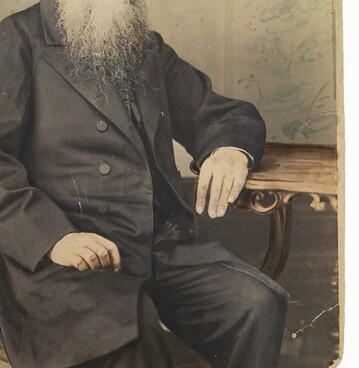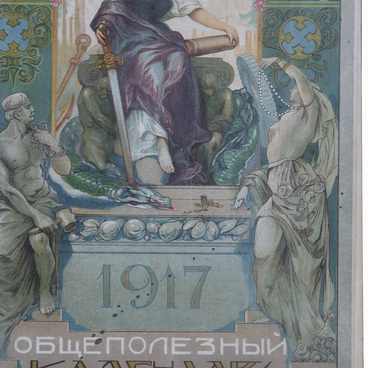Ivan Sytin’s publishing activity targeted different segments of the population. In addition to lubok prints, colorful calendars were also intended for peasants, which Sytin compared to “the only window through which they [peasants] looked at the world.”
It took five years to prepare the first “Universal Calendar” for publication. When it was released, it became a go-to book and a universal encyclopedia for the whole family for all occasions. For this calendar, Sytin purchased special rotary machines, which allowed to significantly increase the rate of production, while reducing its cost. The first “Universal Calendar for 1885” was presented at the Nizhny Novgorod Fair. The following year, the circulation of the “Universal Calendar” amounted to 6 million copies, and by 1916 it exceeded 21 million copies.
The “Universal Russian Calendar for 1914” was issued in a circulation of 2 million copies. The front side of the cover is in color, with images depicting the seasons. The cover for this edition was created by Nikolay Alekseyevich Bogatov. Sytin wanted to establish a way for the reader to share their feedback with his publishing house, so there was always a short message in the calendars with a request to report all the errors and the reader’s wishes. As a result, letters of gratitude and suggestions for content flooded Sytin’s office.
“Why is there no multiplication table in the calendar?” — one of the readers asked, explaining: — “Unfortunately, people are illiterate, I will describe briefly why I, at the request of the illiterate, am asking for such a table that is so necessary for buying and selling goods. There were cases that a person would go to the market to buy or to sell something, for example, he got 75 eggs, 17 pounds of butter, 27 poods [one pood is about 16 kg] of wheat or rye, and would get some fabrics. He doesn’t know how much all this would cost. It requires a multiplication table that would be copied from the calendar by every illiterate person and they would carry it always in their pocket.”
“Information about moonrises and moonsets, ” wrote a
clergyman from a village, “is necessary in order to know what nights you can
travel by moonlight.” “If it is possible and you know the state laws, then
include a tax table in the calendar for every animal that is kept in the garden
or in the sown field, ” requested another. Thanks to such inquisitive citizens,
the calendar produced by Sytin & Co became an integral part in the life of
the people, a source of news and a New Year’s gift. The calendar was constantly
improving, becoming more and more informative.


